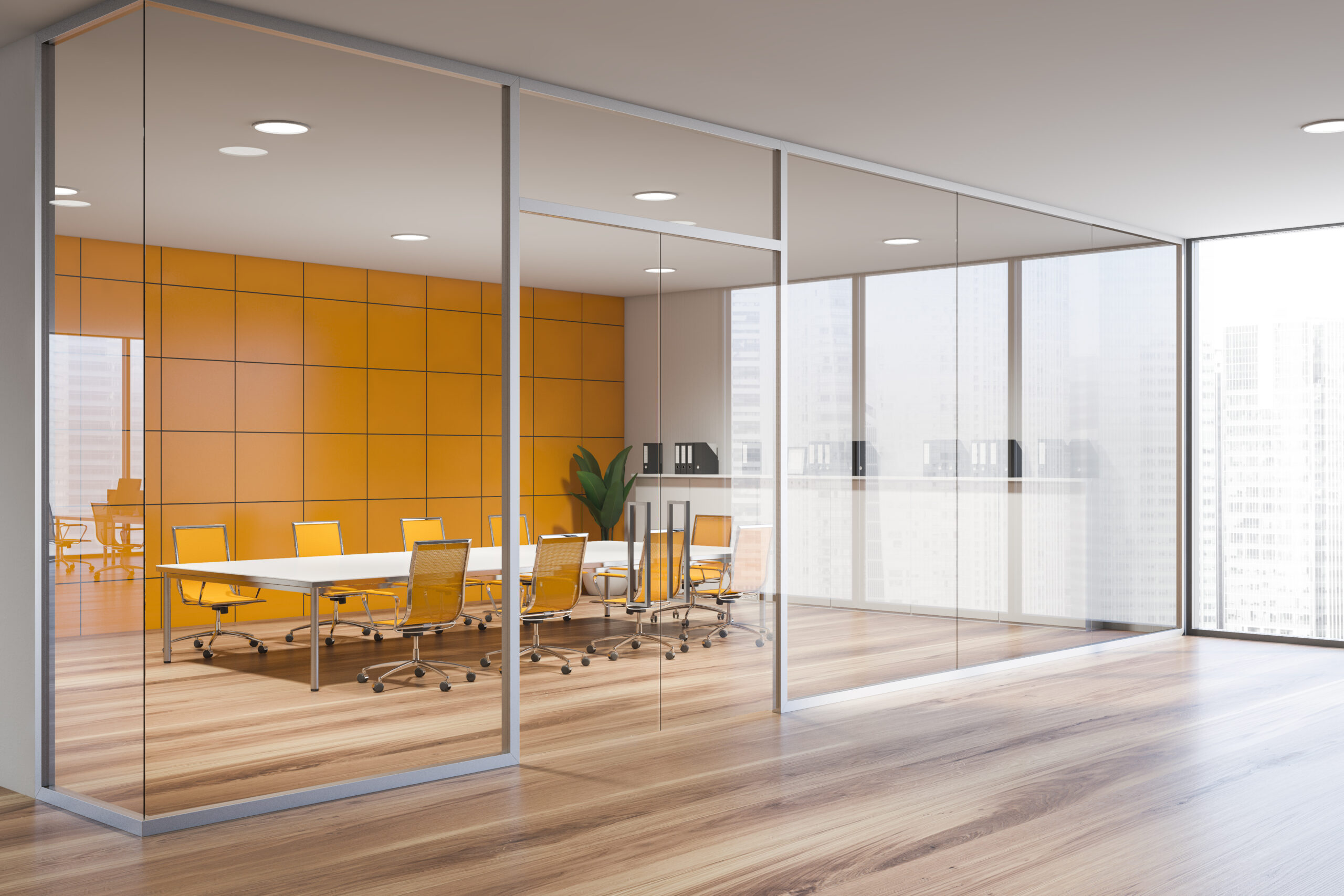Infinite design possibilities
Within the world of building design, glass continues to come out on top, used to create light, bright and contemporary open spaces. One application that has continued to grow in popularity is butt-jointed glass. Here, Andy Lake, Sales Director UK & IRE at Pyroguard, talks all about butt-jointed glass, from its applications and benefits through to factors to consider when specifying and installing.

Driven by the market demand for sleek and striking aesthetics, glass that has been certified for butt-joint applications enables the creation of visually appealing, seamless partitions or façades, with no vertical frame profiles required.
In standard glazed systems, the metal framework can not only add considerable weight, but it can also detract from the overall look – especially if we’re talking about a large glass atrium. Whereas with butt-jointed glass systems, while there is still a perimeter fire-resistant frame, this can often be submerged and hidden in the wall, floor or ceiling. Then, the system simply utilises intumescent strips and structural sealant between the individual glass panes. In many applications, it can almost offer the appearance of ‘floating’ glass, with minimal supportive framework.
What is butt-jointed fire glass glass used for?
Butt-jointed glass is mainly used for internal applications, such as large atriums in offices or commercial buildings, creating a statement feature. Another common application is for long runs of partition walls, such as within offices or schools. Within the world of architecture and interior design there is a considerable emphasis on bringing light into buildings and opening up the interior, creating a series of light and airy spaces. Butt-jointed glass can be a key facilitator of this contemporary trend, with the capability of offering a floor to ceiling of glass. Put simply, with less framework you get more light and more glass.
Of course, with façades, atriums and structural wall systems comes the requirement of passive fire protection, helping to ensure the safety of those within the building in the unfortunate event of a fire. Here, fire safety glass that has been certified for butt-jointed applications can be invaluable, helping to balance safety with aesthetics.
So, what things do you need to consider when specifying butt-jointed fire safety glass?
Fire performance and butt-jointed glass
Of course, it goes without saying that fire performance should be the first and foremost priority. After all, fire protection will be the reason for its specification. As well as considering the classification needed, it is important that the glass complies with the pane height and width that it was tested to and that the perimeter frame is also fire-rated as part of the overall approved system.
Structural support and butt-jointed glass
Next up is line loads and barrier loading, using the guidance for loads BS6180 and guidance for application in Building Regulations Approved Document K, Section 2. This will either be 0.36 kN/m (residential), 0.74 kN/m (typically offices), 1.5 kN/m (typically retail) and 3.0 kN/m (typically high-crowd areas and stadia.)
This is a key consideration: while the glass may look like it’s floating, it has to be structurally sound and supported. Here, liaising with a fire safety glass supplier’s technical team can be invaluable, providing the expertise needed to ensure the system meets your specific project requirements. Similarly, it’s imperative that the glass has an impact resistance safety rating to EN12600. This is especially critical when it’s being installed in large atriums or internal façades that stretch over multiple storeys.
Multi functionality and butt-jointed glass
Only once the safety aspects have been met can you then look at what else can be achieved. Thanks to the multi-functional capabilities of fire safety glass, it is possible to also realise additional bonus features and performance characteristics. For example, acoustics can be an important factor, especially given the common applications of butt-jointed glass within school classrooms and offices. With the correct technical guidance and expertise, acoustic laminates can be inserted into the application, resulting in effective sound reduction.
This multi-functionality can then be taken even further, with decorative and screen-printed glass incorporated into the make-up of the fire safety glass, offering multi-functional applications without compromising the fire safety of the building.
Pyroguard Infinity is our fire safety glass solution for butt-jointed applications. It is certified to provide integrity and heat protection from EW30 to EI90 and 1B1 impact classification, according to EN 12600:2002. With no vertical frame profiles required, it’s the ideal fire safety glass solution for the creation of visually elegant and seamless wall partitions and internal building façades.
Enquire today to find out more about our fire safety glass solution for butt-jointed applications.